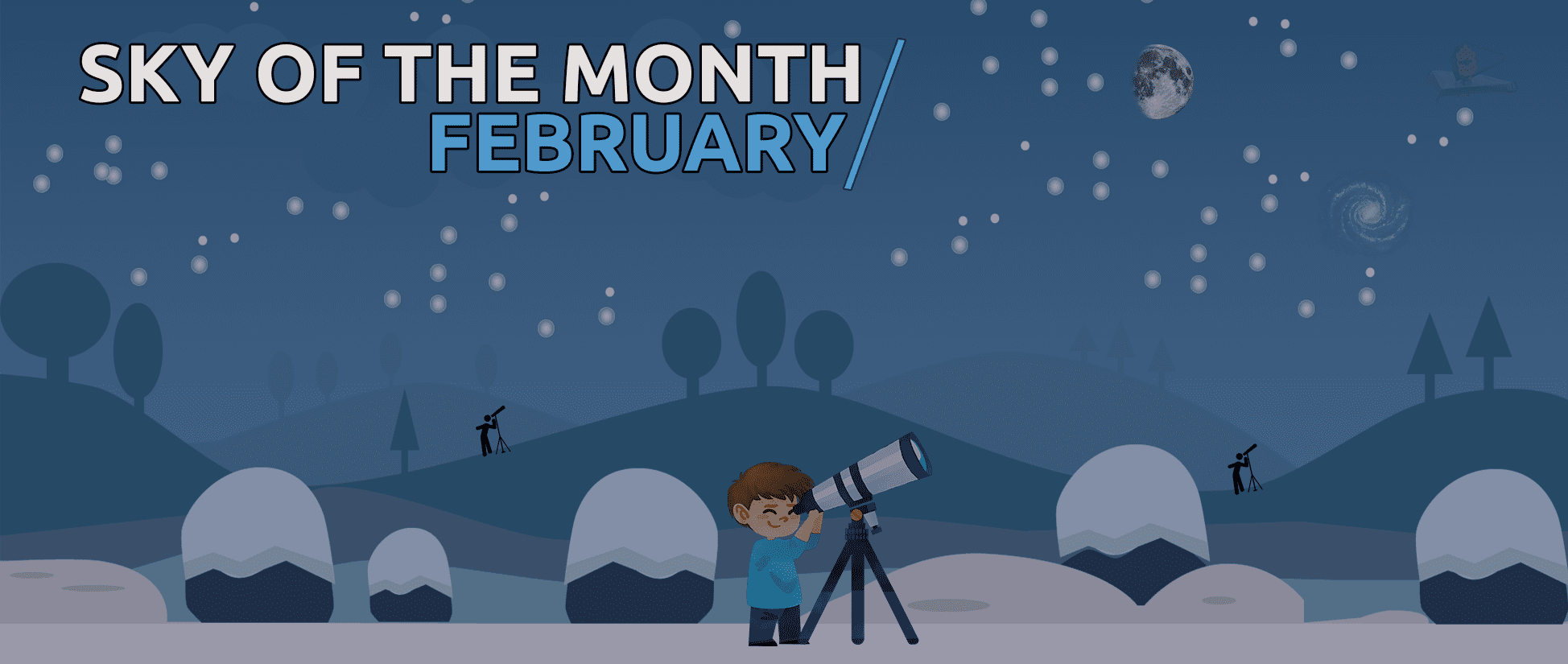
Dear friends of astronomy, we are heading towards the end of winter and the Alcyonides nights give us the opportunity to observe the starry sky. We call Alcyonides nights consecutive evenings of summer that occur mainly from 15 January to 15 February. These evenings are ideal for stargazing as the preceding rain has cleared the atmosphere of suspended particles.
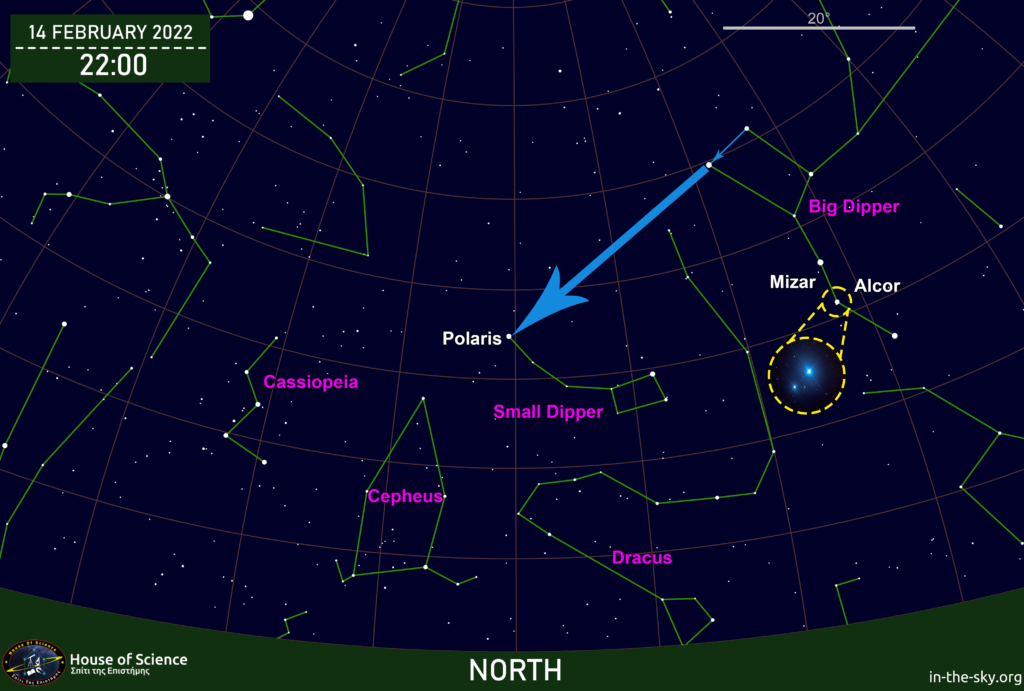
Constellations and Stars
The name of the constellations comes from antiquity and are influenced by mythology. In total there are 88 different constellations in the entire celestial dome (northern and southern sky). Below we will look at some of the constellations, with their main stars, that currently dominate the night sky.
Big Dipper
It has the characteristic ” frying pan ” shape and for the month of February, it comes out in the northern sky at sunset. However, to easily identify it (with its seven characteristic stars), wait until after 10.00 pm when it will rise for good. We notice that the middle star in the “handle” of the “pan” is two stars very close to each other; Mizar is the big star and Alcor is the smallest star.
Finding the polar star: We extend the imaginary line that connects the two stars of the base of the “pan” and at a distance equal to 5 times the distance of these two stars we find the Pole Star.
Fun fact: Polaris is the only star that is always in the same position in the celestial dome and this is due to the fact that it is located directly above the Earth’s axis of rotation.
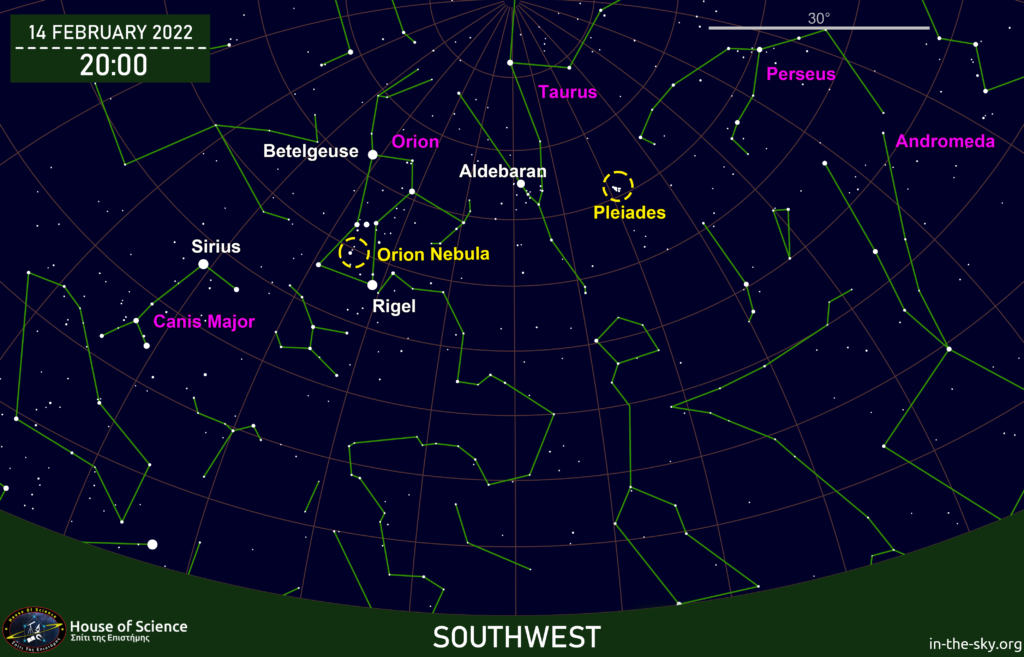
The Taurus and Pleiades – M45
The constellation of Taurus is located just above Orion. The bright orange star in the same constellation is called Aldebaran, which is the iconic eye of the mythical bull.
A challenge for all observers: Following the graph we spot the Pleiades (a cluster of newborn stars) in the constellation of Taurus. To the naked eye you will observe 6 stars that appear very close together.
For those with a pair of binoculars, spotting the Pleiades is a challenge, as observing through binoculars will allow us to see several stars.
Fun fact: Poulia is the name by which our ancestors called the Pleiades.
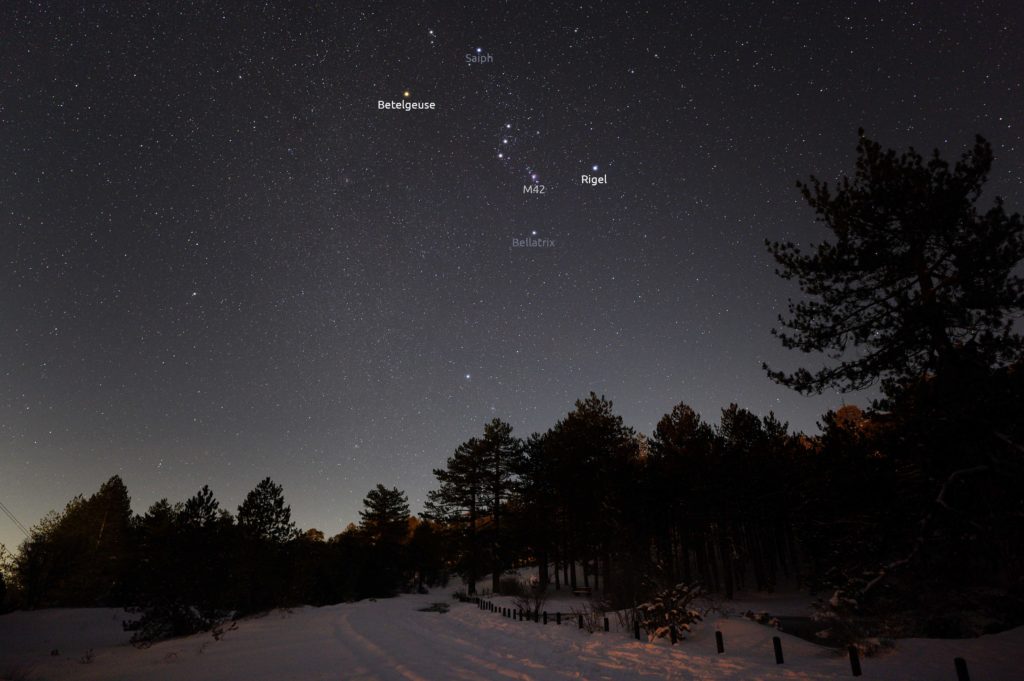
Orion and the impressive nebula – M42
We’ll recognize him as soon as it gets dark in the southwest. By joining the stars of Orion, a human form is formed, which is why in antiquity he was given the name of the mythical hunter. We locate Orion’s characteristic band of three stars. Orion’s brightest star is Rigel and we recognise it by its characteristic blue colour. The second brightest Orion star is Betelgeuse with its characteristic reddish colour. It is another sun that is at the end of its life.
For those with a telescope, the Orion Nebula is a challenge. By following the diagram and aiming below Orion’s belt, you can spot the impressive nebula even with a relatively small telescope.
Fun fact: The Orion nebula M-42 is our nearest region where new stars are born
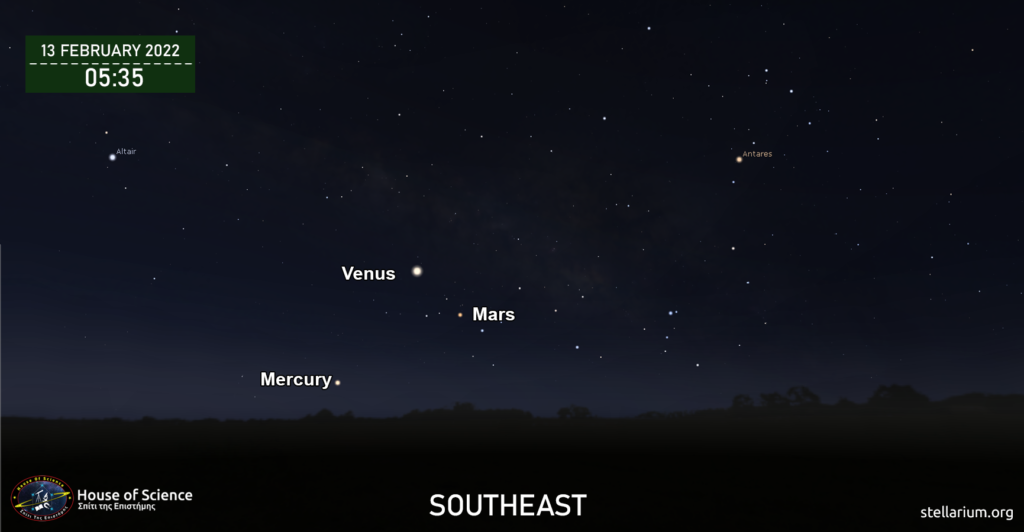
The Planets
An impressive scene with the planets Venus, Mars and Mercury just before sunrise. For those friends being early risers, it’s worth turning their eyes to the east spotting Venus, which stands out in brightness. Lower than Venus one can spot the planets Mars and Mercury.
